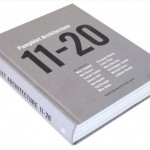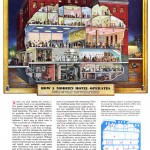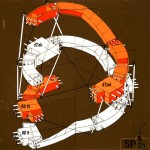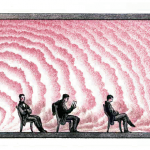Here’s the full commentary by Lebbeus Woods, worth a read. Thanks Ethel for the link.
When rummaging though her extensive library, Aleksandra Wagner discovered a pattern book of the old city of Prague. Similar to a dressmaker’s pattern book, it is meant to be cut up, very precisely, and assembled into a three-dimensional paper model. Designed and printed in the early 1970s, in Czechoslovakia, it is remarkable in several ways:
First: in that pre-computer era, all measurements of the actual architecture had to be made by hand—a formidable task in itself.
Second: the patterns of the scale buildings had to be calculated and drawn by hand. In engineering school, these patterns are called developments, and must take into account the actual dimensions of walls, roofs, and all other architectural surfaces, and therefore are not simply orthographic projections of plans and elevations of the buildings.
Third: the several pages of written instructions on the model’s assembly would seem to have been as difficult to compose and they will be to follow.
Fourth: in that pre-laser cutting era, the authors had a very high regard for a modelmaker’s manual skills, not to mention surplus of time and determination.
It is also worth mentioning that the book’s pattern pages have the visual allure of abstract paintings, enhanced by the knowledge that the shapes were arranged not for their composition but for efficient use of the paper they are printed on. Perhaps they can be thought of as ‘functional’ art. If so, then they have more relationship to architecture than the representations that can be made from them.
LW















Leave a Reply